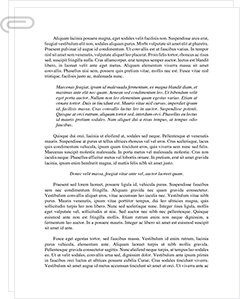 Study Document
Study Document
No Child Left Behind -- Research Paper
Pages:5 (1589 words)
Sources:1
Subject:Government
Topic:No Child Left Behind Act
Document Type:Research Paper
Document:#21523106
Growth models are more reliable in NCLB research because: a) status models depend on data that is "vertically scaled" (measuring from one grade to the next); b) status models can be linked to "individual students or schools over time"; and c) status models sometimes employ "hierarchical linear modeling" -- a more sophisticated and potentially esoteric technique (Azin, p. 74). Meanwhile, growth models are more effective in evaluating the success of students and schools under NCLB because they take into account "gain scores" (which are calculated by examining the difference from the starting point to the end point) (Azin, p. 74). Further, the multilevel growth model for evaluation measures both student growth and group-level growth, offering researchers and educators an opportunity to factor in teaching quality and school quality.
Conclusion: There have been many valid criticisms of NCLB, ranging from a dearth of full funding to the fact that many teachers "teach to the test" (hammer home all the questions that students will has been widely used so teachers and schools are not punished by negative consequences). But those researchers and other scholars and educators generally agree that though NCLB is not perfect, introducing accountability to schools puts pressure on teachers and administrators to get the most out of their resources in order to prepare students for the real world.
Works Cited
Azin, Mariam, and Resendez, Miriam G. "Measuring Student Progress: Changes and Challenges
Under No Child Left Behind." New…
Sample Source(s) Used
Works Cited
Azin, Mariam, and Resendez, Miriam G. "Measuring Student Progress: Changes and Challenges
Under No Child Left Behind." New Directions for Evaluation no. 117 (2008): 71-84.
Hanushek, Eric a., and Raymond, Margaret E. "Does School Accountability lead to Improved
Student Performance?" Journal of Policy Analysis and Management 24.2 (2005): 297-327.

